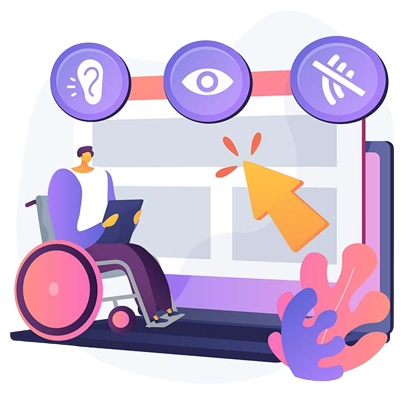ADA Accessibility Compliance
ADA Accessibility Compliance

htmull ADA Remediation Process
Embark on a strategic journey towards enhancing accessibility and reducing the risk of ADA lawsuits with htmull's ADA Remediation Process.
Our refined approach is tailored to ensure that your digital platforms are not only compliant with the ADA guidelines but also exhibit a strong commitment towards inclusivity. Here’s a detailed walkthrough of our process:

Importance of ADA Compliance:
Ensuring ADA compliance is a proactive measure to reduce and minimize the risk of ADA-related lawsuits, though it's important to note that the risk can never be eliminated. Compliance showcases a genuine commitment to providing an inclusive digital environment, making your website accessible to all, including individuals with disabilities. Additionally, ADA compliance can significantly enhance your brand's image and user satisfaction while aligning with legal standards.
htmull’s ADA Remediation Process is designed to navigate this complex landscape, offering a structured approach to improving your website's accessibility and reducing the associated legal risks.
What are the Web Content Accessibility Guidelines (WCAG)?
The Web Content Accessibility Guidelines (WCAG) serve as a global standard for digital accessibility, ensuring that web content is accessible to a broader range of people, including those with disabilities such as visual, auditory, cognitive, and motor impairments. Initiated by the World Wide Web Consortium (W3C), WCAG provides a comprehensive set of recommendations aimed at making web content more inclusive. These guidelines are structured around four fundamental principles known as POUR: Perceivable, Operable, Understandable, and Robust. Under each principle, there are specific guidelines and success criteria that web developers and designers can follow to improve their website's accessibility. WCAG has three levels of compliance: A (lowest), AA (mid-range), and AAA (highest). Each level has a progressively stricter set of criteria. While adhering to Level A resolves the most glaring accessibility barriers, achieving Level AA compliance addresses a wider range of issues, making web content more accessible to a larger audience. Level AAA, on the other hand, signifies a high degree of accessibility but can be challenging to attain for some websites. By striving towards WCAG compliance, website owners not only exhibit a commitment to creating a more inclusive digital environment but also mitigate the risk of accessibility-related legal issues. The guidelines serve as a robust framework for enhancing web accessibility, promoting inclusivity, and ensuring a better user experience for all visitors.
